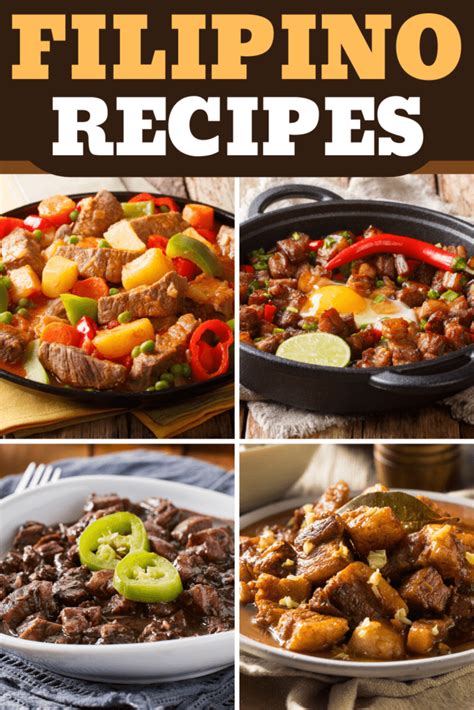Pinoy Food: A Culinary Journey Through the Philippines
The Philippines, a vibrant archipelago in Southeast Asia, boasts a rich and diverse culinary heritage. Pinoy food, a delightful fusion of Malay, Spanish, Chinese, and American influences, offers a tantalizing array of flavors and textures. This blog post will take you on a culinary adventure, exploring some of the most beloved Pinoy food recipes and highlighting their unique characteristics. Prepare your taste buds for a delicious exploration!
Popular Pinoy Food Recipes to Try at Home
Filipino cuisine is known for its bold flavors, often featuring a balance of sweet, sour, salty, and spicy notes. Here are some must-try recipes that capture the essence of Pinoy food:
1. Adobo: The National Dish
Adobo, arguably the national dish of the Philippines, is a savory stew of meat (usually chicken or pork) braised in soy sauce, vinegar, garlic, peppercorns, and bay leaves. Its versatility shines through—some variations include adding sugar for sweetness or chili peppers for a fiery kick. The key is to achieve that perfect balance of salty, sour, and savory flavors that define this iconic dish. Pro Tip: Don't be afraid to experiment with different types of vinegar for unique flavor profiles.
2. Sinigang: A Sour and Savory Delight
Sinigang is another Filipino staple, a sour and savory soup typically made with tamarind broth (sampalok), but can also use guava, kamias, or other souring agents. It's often packed with vegetables and your choice of meat – pork, beef, seafood, or even kangkong (water spinach) for a vegetarian option. The sourness of the broth is perfectly complemented by the savory richness of the meat and vegetables. Pro Tip: Allow the broth to simmer for a long time to develop a deeper, more complex flavor.
3. Lechon: The Roasted Pig
No discussion of Pinoy food is complete without mentioning Lechon, a whole roasted pig. This celebratory dish, often served during special occasions, boasts incredibly crispy skin and juicy, flavorful meat. The preparation involves meticulous attention to detail, with the pig being marinated and expertly roasted to perfection. Pro Tip: The crackling skin is the star of the show; ensure you master the roasting technique to achieve that perfect crunch.
4. Pancit: Noodles of All Kinds
Pancit, a generic term for noodles, encompasses a wide variety of dishes featuring different types of noodles, meats, and vegetables. From the simple yet satisfying Pancit Bihon (thin rice noodles) to the more elaborate Pancit Palabok (thick rice noodles in shrimp sauce), pancit is a versatile and beloved dish that embodies the Filipino love for noodles. Pro Tip: Don't overcook the noodles! Aim for a texture that's slightly firm to the bite.
5. Lumpia: Filipino Spring Rolls
Lumpia, the Filipino version of spring rolls, comes in two variations: Lumpiang Shanghai (fried spring rolls filled with ground meat) and Lumpiang Sariwa (fresh spring rolls with vegetables and often shrimp or pork). Both versions offer a delicious combination of textures and flavors, making them a popular appetizer or snack. Pro Tip: The dipping sauce elevates the Lumpia experience. Experiment with different sauces like sweet chili or vinegar-based sauces.
Beyond the Recipes: Embracing the Pinoy Food Culture
Pinoy food is more than just recipes; it's a reflection of the Philippines' rich history and diverse cultural influences. Sharing a meal is an integral part of Filipino culture, fostering connection and community. Exploring these recipes is a journey into the heart of Filipino life and heritage. So gather your ingredients, follow these recipes, and experience the deliciousness of Pinoy food! Enjoy!
